When the Village Vanguard came to Denmark
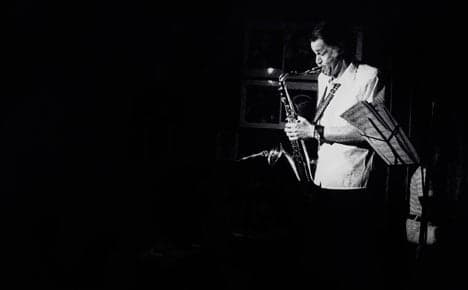
In January 1979, with no warning and to the great surprise of his band, Thad Jones, jazz trumpeter and composer, abandoned his residency at the Village Vanguard, New York, and moved straight to Denmark.
For the next six months he acted as the band leader of the Danish Radio Big Band. He left his wife, settled into a new apartment, and married a Danish girl, Lis Jones. He died in 1986, and is buried in Vestre Kirkegaard Cemetery, in Vesterbro.
He was not the only one to make this curious flight path from New York to Denmark. If you bicycle around Copenhagen’s cemeteries this summer, beneath the languorous crowds of sunbathers and squeezed in between Søren Kierkegaard, Niels Bohr and Hans Christian. Andersen, you’ll find no fewer than seven prominent American jazz musicians buried in discreet nooks and crannies. Many others enjoyed long sojourns in the capital.
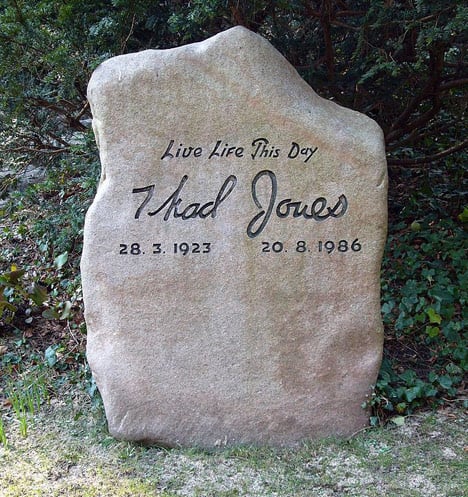
Thad Jones's grave in Vestre Kirkegård. Photo: Public domain
It was an exodus of the stars. In the 1960s and 70s, New Yorkers such as Dexter Gordon, Ben Webster, Bud Powell, Kenny Drew - habitués of the infamous Village Vanguard - all made the pilgrimage to Copenhagen, to perform at a little club on Store Regnegade named Jazzhus Montmartre, and stayed on to gig, record and live.
There were several reasons for their enthusiasm. After the Second World War, Denmark established itself as a jazz powerhouse, throwing off the conventions of stodgy Dixie big-band numbers, and embracing swing and bebop.
Under the direction of the hyper-aware Herluf Kamp-Larsen, Jazzhus Montmartre opened in 1959 with innovative booking policies that encouraged close cooperation with Danish musicians. Copenhagen provided a natural base for the European circuit tour, close to Paris, Berlin and London. German sound engineering had leapt light years ahead, and this allowed the emergent Danish record labels like Storyville and SteepleChase Records to take full advantage of the overflow of artists milling around the jazz bars and studios of Copenhagen, creating a vibrant record industry.
But there were deeper, more nuanced reasons for this exodus to Copenhagen. The majority of these musicians were African-American. Denmark, a state well known for its tolerance, egalitarianism and high standard of living, presented an easy alternative to the racial and economic problems faced by the predominantly black jazz community in the States.
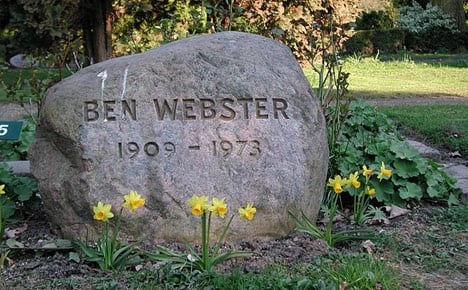
Ben Webster's grave at Assistens Kirkegård. Photo: Marie-Jeannette/WikiCommons
Maxine Gordon, Dexter Gordon’s wife, described her time in Copenhagen as “a time of exceptional respect, warm hospitality, better pay, less racism and classism, and informed and sympathetic press” (a familiar sentiment shared today). Dexter felt the same: “I’ve met some very beautiful - dejlige - people. I feel very much at home.”
Interestingly, Denmark’s colonial past may have also fed into Denmark's allure. Fulbright fellow Dr. Ethelene Whitmire is currently researching African-American migration to Denmark.
“Many African Americans decided to go to Denmark because of their connection with the US Virgin Islands - the former Danish West Indies,” she says. Ancestry, heritage and cultural ties all drew a shadowy path to Denmark, enticing literary figures of the Harlem Renaissance, communist militants, even a professional baseball player. Musicians formed just one stream of a growing river.
This ex-pat troupe of musicians helped forge strong connections between the two countries. Jazz critics such as Erik Wiedermann (‘Dr Jazz’) and Torben Ulrich (a former professional tennis player and father of a certain Lars Ulrich) triumphed the new styles coming out of New York. Audiences responded with gusto. The drummer Albert ‘Tootie’ Heath claimed that his residency at Montmartre provided opportunities that he couldn't even dream about in the States.
The relationship proved reciprocal. Nils-Henning Ørsted Pedersen, the laconic, bearded double-bassist, and Mads Vinding both went on to great successes in the States. Pedersen’s 1977 album Duo with Kenny Drew, which blends jazz standards with traditional Danish folk songs, remains one of Storyville’s highest selling albums, especially in Japan. Through enthusiastic interaction, these players opened up a trans-Atlantic field of new improvisatory engagements instead of a slavish imitation of the established American jazz hegemony.
Montmartre closed in 1986 (it later reopened in 2010), and the vibrant scene waned and faded, but not before foundations had been deeply laid within Copenhagen’s cultural DNA. The Copenhagen Jazz Festival launched in 1978, and has since swollen to a 1,200–concert international affair. The Rytmisk Musikkonservatorium was founded in 1986. The Ben Webster Foundation was formed in 1976, which supports young musicians, both Danish and American. The effects of this relationship have even been inscribed upon the city’s topography. If you head out to Sydhavn, the city’s traditional commercial harbour now rehabilitated as trendy, up-market real estate, you’ll find some familiar-sounding street names: 'Dexter Gordons Vej', 'Ben Websters Vej', 'Kenny Drews Vej', and 'Thad Jones Vej' all trumpet American jazz’s cultural impact upon Copenhagen.
However, the relationship has perhaps proven one-sided. Danish musicians have never experienced the same success in the States, even in a more globalised market. This has led to a growing push for both exportation, and protection, of Danish jazz. The Dansk Jazz Forbund was founded in 1997, to help artists secure funding, consultation and booking agents overseas. The Danish State Arts Fund provide substantial financial support to successful Danish jazz musicians. Simultaneously, there has been a decrease in the number of international bookings in Copenhagen over recent decades in favour of Danish and Scandinavian acts.
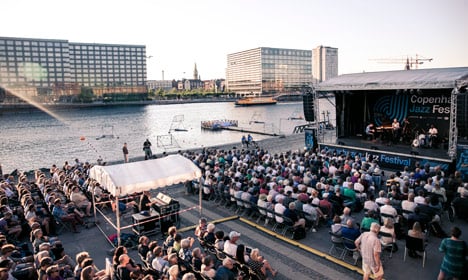
The Joshua Redman Quartet perform in 2014. Photo: Copenhagen Jazz Festival
The Copenhagen Jazz Festival seeks to transcend this parochialism. Small businesses and local bands rub shoulders with established international acts, large outdoor spaces and concert halls. The festival’s appeal is double-sided, according to Fabian Holt, an associate professor at RUC: “The festival is a tourist attraction, but also a space of intimacy for locals, as they gather around the now familiar sound of jazz in public places”. There is a record-breaking number of concerts on this year’s bill, including, in the international corner, Gregory Porter, Dee Dee Bridgewater and Brian Blade, as well as old-timers such as Burt Bacharach and Pat Methany.
The festival represents the essence of those heady days of the Montmartre: an openness to experiencing new forms and innovations, coupled with an assured authenticity of place – the ability to match nationalism with a universal commonality, a feat that the EU seems unable to achieve today. Or, in other terms, it taps into something more than cerebral, something more hygge.
When writing about his experience of Danish audiences, Dexter Gordon wrote, “They are not listening off the top. They are listening to the emotions, the modifications. They’ve got a very different outlook about everything...I think the Scandinavian audience is very discerning. In fact, my biggest experience in communications with audiences has been in Copenhagen.”
Comments
See Also
For the next six months he acted as the band leader of the Danish Radio Big Band. He left his wife, settled into a new apartment, and married a Danish girl, Lis Jones. He died in 1986, and is buried in Vestre Kirkegaard Cemetery, in Vesterbro.
He was not the only one to make this curious flight path from New York to Denmark. If you bicycle around Copenhagen’s cemeteries this summer, beneath the languorous crowds of sunbathers and squeezed in between Søren Kierkegaard, Niels Bohr and Hans Christian. Andersen, you’ll find no fewer than seven prominent American jazz musicians buried in discreet nooks and crannies. Many others enjoyed long sojourns in the capital.

Thad Jones's grave in Vestre Kirkegård. Photo: Public domain
It was an exodus of the stars. In the 1960s and 70s, New Yorkers such as Dexter Gordon, Ben Webster, Bud Powell, Kenny Drew - habitués of the infamous Village Vanguard - all made the pilgrimage to Copenhagen, to perform at a little club on Store Regnegade named Jazzhus Montmartre, and stayed on to gig, record and live.
There were several reasons for their enthusiasm. After the Second World War, Denmark established itself as a jazz powerhouse, throwing off the conventions of stodgy Dixie big-band numbers, and embracing swing and bebop.
Under the direction of the hyper-aware Herluf Kamp-Larsen, Jazzhus Montmartre opened in 1959 with innovative booking policies that encouraged close cooperation with Danish musicians. Copenhagen provided a natural base for the European circuit tour, close to Paris, Berlin and London. German sound engineering had leapt light years ahead, and this allowed the emergent Danish record labels like Storyville and SteepleChase Records to take full advantage of the overflow of artists milling around the jazz bars and studios of Copenhagen, creating a vibrant record industry.
But there were deeper, more nuanced reasons for this exodus to Copenhagen. The majority of these musicians were African-American. Denmark, a state well known for its tolerance, egalitarianism and high standard of living, presented an easy alternative to the racial and economic problems faced by the predominantly black jazz community in the States.
Ben Webster's grave at Assistens Kirkegård. Photo: Marie-Jeannette/WikiCommons
Maxine Gordon, Dexter Gordon’s wife, described her time in Copenhagen as “a time of exceptional respect, warm hospitality, better pay, less racism and classism, and informed and sympathetic press” (a familiar sentiment shared today). Dexter felt the same: “I’ve met some very beautiful - dejlige - people. I feel very much at home.”
Interestingly, Denmark’s colonial past may have also fed into Denmark's allure. Fulbright fellow Dr. Ethelene Whitmire is currently researching African-American migration to Denmark.
“Many African Americans decided to go to Denmark because of their connection with the US Virgin Islands - the former Danish West Indies,” she says. Ancestry, heritage and cultural ties all drew a shadowy path to Denmark, enticing literary figures of the Harlem Renaissance, communist militants, even a professional baseball player. Musicians formed just one stream of a growing river.
This ex-pat troupe of musicians helped forge strong connections between the two countries. Jazz critics such as Erik Wiedermann (‘Dr Jazz’) and Torben Ulrich (a former professional tennis player and father of a certain Lars Ulrich) triumphed the new styles coming out of New York. Audiences responded with gusto. The drummer Albert ‘Tootie’ Heath claimed that his residency at Montmartre provided opportunities that he couldn't even dream about in the States.
The relationship proved reciprocal. Nils-Henning Ørsted Pedersen, the laconic, bearded double-bassist, and Mads Vinding both went on to great successes in the States. Pedersen’s 1977 album Duo with Kenny Drew, which blends jazz standards with traditional Danish folk songs, remains one of Storyville’s highest selling albums, especially in Japan. Through enthusiastic interaction, these players opened up a trans-Atlantic field of new improvisatory engagements instead of a slavish imitation of the established American jazz hegemony.
Montmartre closed in 1986 (it later reopened in 2010), and the vibrant scene waned and faded, but not before foundations had been deeply laid within Copenhagen’s cultural DNA. The Copenhagen Jazz Festival launched in 1978, and has since swollen to a 1,200–concert international affair. The Rytmisk Musikkonservatorium was founded in 1986. The Ben Webster Foundation was formed in 1976, which supports young musicians, both Danish and American. The effects of this relationship have even been inscribed upon the city’s topography. If you head out to Sydhavn, the city’s traditional commercial harbour now rehabilitated as trendy, up-market real estate, you’ll find some familiar-sounding street names: 'Dexter Gordons Vej', 'Ben Websters Vej', 'Kenny Drews Vej', and 'Thad Jones Vej' all trumpet American jazz’s cultural impact upon Copenhagen.
However, the relationship has perhaps proven one-sided. Danish musicians have never experienced the same success in the States, even in a more globalised market. This has led to a growing push for both exportation, and protection, of Danish jazz. The Dansk Jazz Forbund was founded in 1997, to help artists secure funding, consultation and booking agents overseas. The Danish State Arts Fund provide substantial financial support to successful Danish jazz musicians. Simultaneously, there has been a decrease in the number of international bookings in Copenhagen over recent decades in favour of Danish and Scandinavian acts.

The Joshua Redman Quartet perform in 2014. Photo: Copenhagen Jazz Festival
The Copenhagen Jazz Festival seeks to transcend this parochialism. Small businesses and local bands rub shoulders with established international acts, large outdoor spaces and concert halls. The festival’s appeal is double-sided, according to Fabian Holt, an associate professor at RUC: “The festival is a tourist attraction, but also a space of intimacy for locals, as they gather around the now familiar sound of jazz in public places”. There is a record-breaking number of concerts on this year’s bill, including, in the international corner, Gregory Porter, Dee Dee Bridgewater and Brian Blade, as well as old-timers such as Burt Bacharach and Pat Methany.
The festival represents the essence of those heady days of the Montmartre: an openness to experiencing new forms and innovations, coupled with an assured authenticity of place – the ability to match nationalism with a universal commonality, a feat that the EU seems unable to achieve today. Or, in other terms, it taps into something more than cerebral, something more hygge.
When writing about his experience of Danish audiences, Dexter Gordon wrote, “They are not listening off the top. They are listening to the emotions, the modifications. They’ve got a very different outlook about everything...I think the Scandinavian audience is very discerning. In fact, my biggest experience in communications with audiences has been in Copenhagen.”
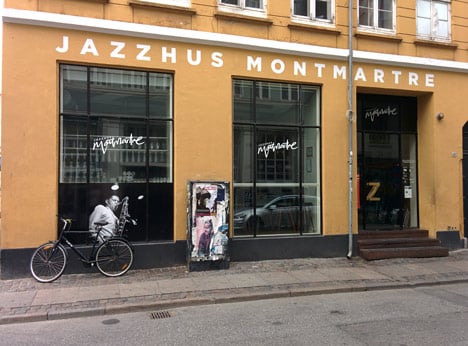
Join the conversation in our comments section below. Share your own views and experience and if you have a question or suggestion for our journalists then email us at [email protected].
Please keep comments civil, constructive and on topic – and make sure to read our terms of use before getting involved.
Please log in here to leave a comment.